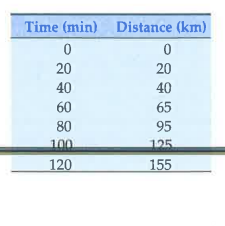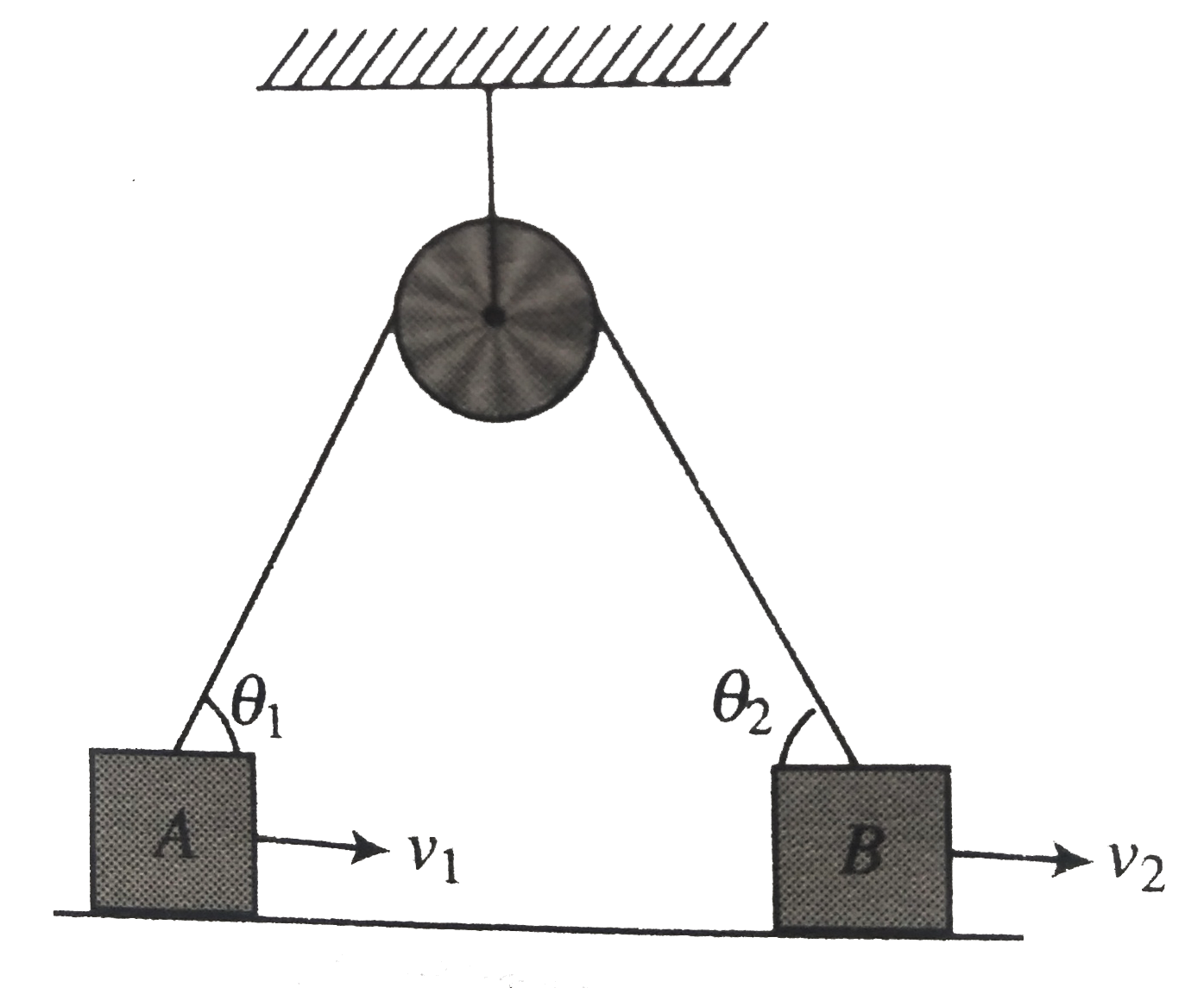A point moves with a uniform acceleration and v1,v2,v3 denote the average velociies in the three succellive intervals of time t1 ,t2 and t3. Find the ratio of ( v1 - v2) and ( v2 - v3).
t1−t2t2−t3
t1−t2t2+t3
t1+t2t2−t3
t1+t2t2+t3
The correct Answer is:D
Let u be initial velocity and a be uniform acceleration .

Average velocities in the intervals from 0 to t1,t1 to t2andt2 tot3 are
v1=u+u+at12=u+a2t1 ...(i)
v2=u+at1+u+a(t1+t2)2=u+at1+a2t2 ...(ii)
v3=u+a(t1+t2)+u+a(t1+t2+t3)2
=u+at1+at2+a2t3 ...(iii)
Subtract (i) from (ii) , we get, v2−v1=a2(t2+t3) ...(v)
Divide (iv) by (v), we get
v2−v1v3−v2=(t1+t2)(t2+t3) or v1−v2v2−v3=(t1+t2)(t2+t3)
Topper's Solved these Questions
- BOOK - MTG GUIDECHAPTER - KINEMATICS EXERCISE - Topicwise Practice Questions (RELATIVE VELOCITY)15videos
KINEMATICS
- BOOK - MTG GUIDECHAPTER - KINEMATICS EXERCISE - Topicwise Practice Questions (VECTORS)23videos
KINEMATICS
- BOOK - MTG GUIDECHAPTER - KINEMATICS EXERCISE - Topicwise Practice Questions (GRAPHICAL STUDY OF MOTION)16videos
KINEMATICS
- BOOK - MTG GUIDECHAPTER - GRAVITATIONEXERCISE - AIPMT/NEET MCQS32videos
GRAVITATION
- BOOK - MTG GUIDECHAPTER - LAWS OF MOTIONEXERCISE - AIPMT /NEET (MCQ)24videos
LAWS OF MOTION
Similar Questions
A point moves with a uniform acceleration and v1v2v3 denote the average velociies in the three succellive intervals of time _1,t2 and t_3. Find the ration of ( v-1 - v_2) and ( v_2 - v_3).
View SolutionA point moves with uniform acceleration and v1,v2,v3 denote the average velocities in the successive intervals of times v1,v2,v3 . Then v1−v2v2−v3=t1+t2t2+t3
View Solution
Knowledge Check
- Question 1 - Select One
A point moves with uniform acceleration and v1,v2 and v3 denote the average velocities in the three successive intervals of time t1,t2,andt3. Which of the following relations is correct
A(v1−v2):(v2−v3)=(t1−t2):(t2−t3)B(v1−v2):(v2−v3)=(t1+t2):(t2+t3)C(v1−v2):(v2−v3)=(t1−t2):(t1−t3)D(v1−v2):(v2−v3)=(t1−t2):(t2−t3) - Question 2 - Select One
A point moves with uniform acceleration and v1,v2, and v3 denote the average velocities in the three successive intervals of time t1.t2, and t3 Which of the following Relations is correct?.
A(v1−v2):(v2−v3=(t1−t2:(t2+t3.B(v1−v2):(v2−v3=(t2−t2:(t2+t3C(v1−v2):(v2−v3=(t1−t2:(t2+t3D(v1−v2):(v2−v3=(t1−t2:(t2+t3 - Question 3 - Select One
For body moving with uniform acceleration a, initial and final velocities in a time interval t are u and v respectively. Then its average velocity in the time interval t is
A(v+at)B(v−at2)C(v−at)D(u−at2)
A particle moves in a straight line with uniform acceleration. Its velocity at time t=0 is v1 and at time t=t is v2. The average velocity of the particle in this time interval is v1+v22 . Is this statement true or false?
View SolutionA bus moves at a uniform speedv1for some time and then with a uniform speed v2. The distance-time table is given below. Plot the corresponding distance-time graph and answer the following questions .

Find the values of v1 and v2.View SolutionIn fig., blocks A and B move with velocities v1 and v2 along horizontal direction. Find the ratio of v1/v2
 View Solution
View SolutionIf velocity of a particle is given by v=(2t+3)m/s. Then average velocity in interval 0≤t≤1 s is :
View SolutionStarting from rest a particle is first accelerated for time t1 with constant acceleration a1 and then stops in time t2 with constant retardation a2. Let v1 be the average velocity in this case and s1 the total displacement. In the second case it is accelerating for the same time t1 with constant acceleration 2a1 and come to rest with constant retardation a2 in time t3. If v2 is the average velocity in this case and s2 the total displacement, then
View Solution

